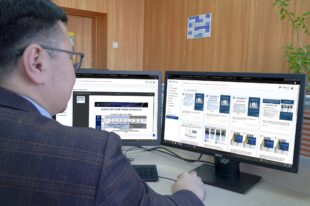Overview of the INTOSAI-P 50

By Gilles Miller, Senior auditor and liaison officer of the Forum of jurisdictional SAIs at the French Cour des comptes
The INTOSAI Core Principles are at the pinnacle of INTOSAI’s professional pronouncements, just behind the Lima and Mexico Declarations, which represent the “Magna Carta” of external government auditing and define the conditions for its independent and effective functioning. To date in 2024, there are three: one is devoted to the value and benefits that SAIs bring to citizens (INTOSAI-P 12), another to transparency and accountability (INTOSAI-P 20), and the third sets out the 12 principles that should guide the actions of SAIs with jurisdictional powers, in the exercise of their functions.
INTOSAI-P 50, adopted at INCOSAI XXIII (September 2019), aims to help member SAIs with jurisdictional powers to develop their own professional approach, in accordance with their mandate and the laws and regulations of their country. It is a shared document, drawn up in consultation with the Forum for Professional Positions (FIPP), validated by INTOSAI and intended to serve as a reference for all SAIs already involved or called upon to develop a jurisdictional activity.
A SAI is considered a “jurisdictional SAI” (or a SAI with jurisdictional powers) when its mandate and organization enable it to carry out not only all the types of audit that a SAI is required to carry out, but when, in addition to these, it is vested with the power to rule on the liability of persons subject to the law in the event of irregularities or mismanagement. In this sense, jurisdictional activities differ from financial, performance or compliance audits, even though they may be carried out in conjunction with or following on from such audits. Jurisdictional procedures must therefore comply with particularly demanding principles, as they have a direct impact on the personal situation of individuals, and the violation of these principles directly threatens the jurisdictional decision itself.
The INTOSAI-P 50 is an integral part of the “INTOSAI Framework of Professional Pronouncements” (IFPP) and its principles are intended to be used in conjunction with all the other professional positions: INTOSAI-P 50 does not contradict any of them. On the other hand, INTOSAI-P 50 helps to fill a gap: it is the missing piece in a jigsaw made up of numerous professional positions (founding principles and standards) in which the jurisdictional activity of SAIs is mentioned without ever being defined. For example, the Lima and Mexico Declarations explicitly mention the need to obtain compensation for losses suffered, which is one of the functions of SAIs vested with jurisdictional powers, and the possibility of applying sanctions. Similarly, ISSAI 100 on Fundamental Principles of Public Sector Auditing, ISSAI 130 on Code of Ethics, ISSAI 400 and ISSAI 4000 on Compliance Audit Principles and Standard refer to the duties of certain SAIs, recognized as courts or legally vested with sanctioning powers, the definition of which they refer to principle documents that did not exist before INTOSAI P-50 was adopted in 2019.
The official presentation of the 12 principles, in INTOSAI-P 50, does not follow a chronological logic (i.e. describing the following principles whether they apply at the beginning, in the middle or at the end of a jurisdictional procedure). Rather, they are set out in an order that goes from the most constrained (by law, by principles external to the SAI) to the freest (principles that a SAI can implement completely autonomously). Here they are as they appear in INTOSAI-P 50.
- The law should define the liability and sanction regime applicable to persons accountable by law before the SAI. This is the principle of legality: it is the law that defines a system of liability before a court (nature of liability or typology of offences, penalties and methods of sanction). The SAI cannot, of course, set itself up as a court in its own right, and it cannot sanction a breach or fault if the law has not precisely defined the conditions for its intervention.
- The member(s) of the SAI, involved in the jurisdictional activities, should benefit from guarantees legally spelled out, which explicitly ensure their independence toward the public authorities. The principle of independence refers to the guarantees of independence of the SAI as a court or of its judicial body, as well as of its members in the exercise of their judicial functions.
- The SAI should have legal powers or rights guaranteeing its access to information. This principle specifies that, for the purposes of its jurisdictional activity and investigative measures, the SAI must have an absolute right of access to documents that enable the truth to be ascertained.
- An irregular fact may be prosecuted or sanctioned only before the expiry of a reasonable time from the moment it was committed or discovered. This principle organizes a “right to be forgotten”. Facts that are too old should benefit from the statute of limitations. It is also an invitation to bring the date of the reprehensible acts closer to that of their sanction by the jurisdictional SAI.
- Any judgement of the SAI must be open to be objected and reconsidered and is subject to appeal or annulment in accordance with the national regulation. The right to appeal to another jurisdiction is a guarantee of security, and therefore of quality. It can be said to be consubstantial with the act of judging.
- The SAI must ensure that the persons accountable before it undergo a fair trial guaranteed by the legal procedures. The right to a fair trial, guaranteeing absolute respect for the rights of the defense, is also consubstantial with the act of judging.
- The impartiality of the judgement process must be guaranteed by regulations governing the activities of the jurisdictional SAIs and the resulting proceedings. Whereas the principle of independence (2) was aimed at the SAI as a body, this principle of impartiality is aimed at each member of the judging panel.
- The SAI must ensure that the exercise of the jurisdictional activities leads to notified and implemented judgement. The sanction of the personal liability of the litigant must be effective. This is the principle of the effectiveness of jurisdictional decisions. A SAI that did not issue a decision (res judicata), but merely made proposals without the force of res judicata, would not quite be a court.
- A person accountable by law cannot be condemned for the same irregularity to several sanctions of the same nature imposed by the SAI. A person accountable by law can only be condemned for the same irregularity to sanctions of a different nature imposed by the SAI and other courts if the law so permits. By virtue of this principle, which is often translated into the Latin expression “Non bis in idem” or “Ne bis in idem”, the same facts cannot be punished twice, at least in the same context. Similarly, no one can be ordered to pay compensation for the same loss twice.
- The SAI must guarantee the quality of jurisdictional procedures through an efficient and systematic quality control. Setting up a suitable quality control system is a duty for a SAI: for jurisdictional SAIs, this obligation must be adapted to the particularities of decision-making, which can only be contested and challenged according to specific procedures. However, structures and procedures can be subject to quality control measures, thus contributing to the quality assurance of the judicial function.
- The SAI must complete the jurisdictional procedure within a reasonable time. Judges and all those involved in the proceedings are urged not to delay the judicial process unnecessarily. However, the needs of the investigation and the exercise of rights of appeal may slow proceedings down, without the requirement of reasonable time being invoked.
- The SAI must ensure that judgements, as any judicial decisions, are made publicly, respecting the secrecy and restrictions linked to confidentiality that are legally mandatory as well as the protection of personal data. The SAI must ensure that the rules of confidentiality laid down by law are respected. At the same time, it must contribute to the dissemination of its case law, with a view to informing citizens and litigants (principle of communication).
Conclusion
Equipped with these 12 principles, the SAIs with jurisdictional attributions, gathered within the Forum of Jurisdictional SAIs, have undertaken the drafting of a guide (GUID) intended to facilitate the implementation and application of these principles, which relate to the very specific environment and nature of this activity, by providing a general framework for action. As of March 2024, this draft jurisdictional guide has been submitted to the KSC for incorporation into the INTOSAI Guidance standards (see the subsequent article in this INTOSAI Journal edition on guidelines).





